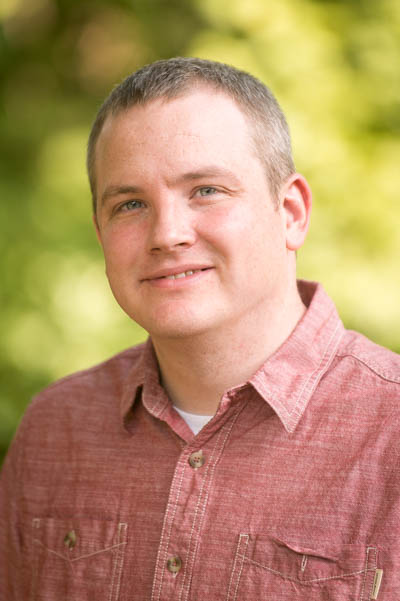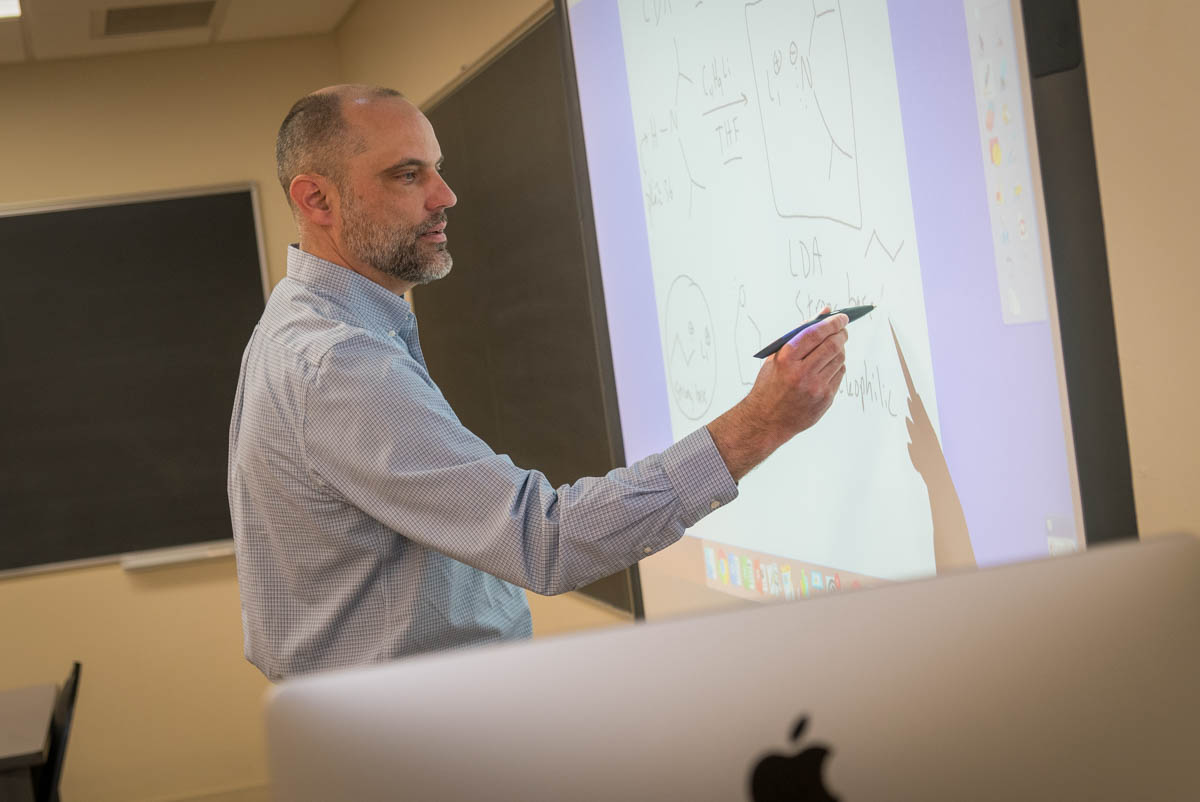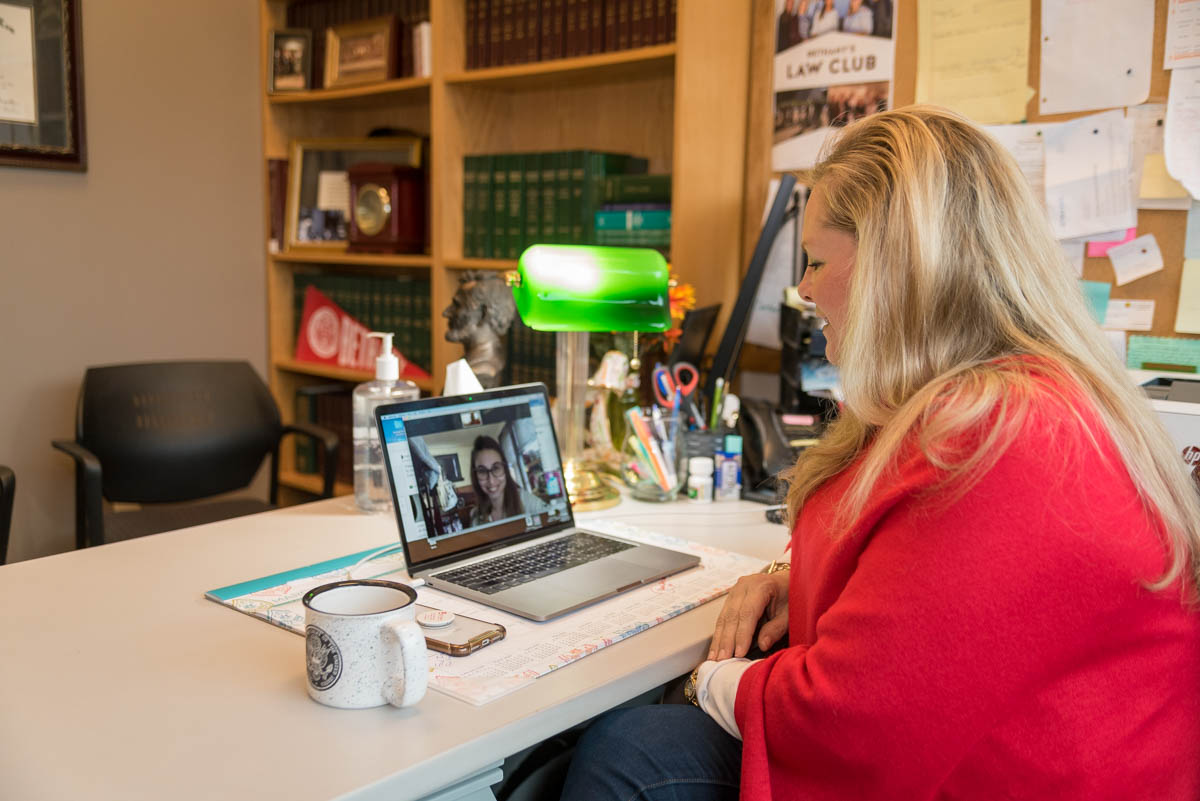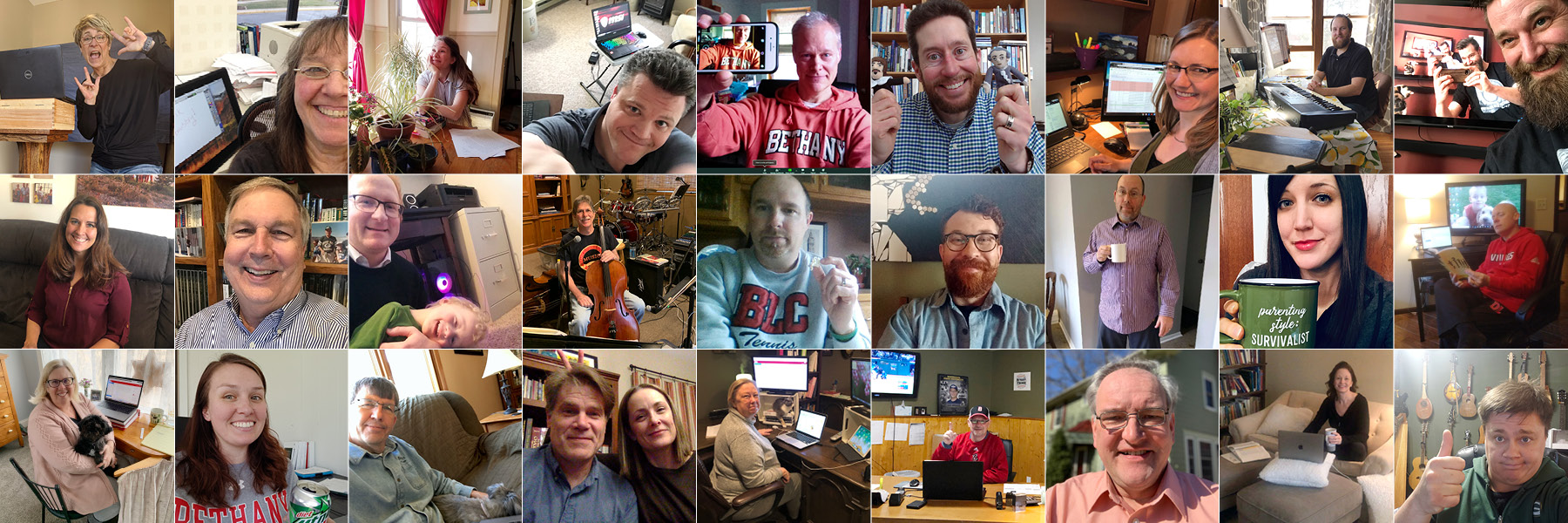By Lance Schwartz • Director of Institutional Communication
March 16, 2020, was the day Bethany students were supposed to return to the campus after spring break. The second half of the spring semester is always a time of eager anticipation for the stretch run to graduation in early May.
But this year was shaping up to be different—everyone was beginning to understand the gravity of the situation unfolding. With a worldwide pandemic ramping up, the College’s administration found itself wrestling with the ultimate question in all the uncertainty, “How can we teach these students if they’re not on campus for a few weeks, or maybe even longer?”
“How can we teach these students if they’re not on campus for a few weeks, or maybe even longer?”
It seemed the only thing that could possibly be said about the daunting task of moving an entire liberal arts college’s curriculum to online delivery in just five working days was, “Lord, help us.” And so, the prayers went up, and the work commenced.
To a certain degree, Bethany Lutheran College was in a better position than some because the College had been offering online courses for several years now. But the reality was that the vast majority of these courses had never been delivered in any other model than the traditional, in-person format—in other words these courses had never been taught online before.
Kevin Zimmerman is Bethany’s Director of Online Learning. Zimmerman was hired in 2016 to help the College build up its offerings in online instruction, and to start an online delivery model for high school students to take college classes from Bethany. These efforts led to a small, but dedicated group of Bethany professors teaching college courses online in recent years. It’s been an endeavor that’s led to enrollment growth, and serves as an impetus for future program additions. But this unusual scenario—moving all of the classes online at once in a week’s time—was going to be a monumental task.
Earlier in March, during the initial days of the coronavirus showing up in the United States, Zimmerman had been watching what was happening across the nation at other institutions, and he began to ready himself for a decision at Bethany.

“Officially, I learned about the decision at the same time as everybody else—early Monday afternoon the day we were supposed to return from spring break. There had been rumblings for a week, though, on email listservs I monitor, and in the media, that this was likely to happen, so I had been working on Bethany’s Contingency Remote Teaching Guide since the previous week, and was ready to present it to the faculty. The document outlines Bethany’s online response to disruptive emergencies ranging from short personal emergencies to long-term community emergencies,” explained Zimmerman.
When the Administration ultimately decided that online instruction was inevitable, Zimmerman teamed up with IT staff members Scott Abbey and John Sehloff to set in action the massive shift to online instruction.
“We led online training sessions about teaching in a virtual classroom with about 100 participants over two days. Some of the professors repeated the sessions to get the information more than once. We also held more than twenty one-on-one meetings with professors to help them prepare for their specific situations,” said Zimmerman.
A few Bethany professors with prior online teaching experience also jumped in to help in the training effort and assist with the transition. This small group included Angie Johnson (communication), Julie Kjeer (mathematics), and Jonathan Stadler (psychology).
Zimmerman wasn’t alone in his assumption that moving classes online was going to be an inevitable circumstance. College Chaplain Don Moldstad teaches a number of religion courses each semester. He also wondered about the possible move before an official announcement was made. His speculation was also blended with a tiny bit of anxiety about what could possibly evolve. Not because of the situation unfolding, but rather the daunting learning curve for a self-professed sixty-one-year-old tech neophyte.
“Once we began realizing that this virus was continuing to spread, a number of faculty members started to sense that we were heading in the direction of online instruction. To be honest, I was a bit intimidated. I’d learned to use technology for the duties I was accustomed to doing in my work, but stretching myself into something so different seemed to be quite a challenge. But, at the same time, part of me was excited to learn.”
Moldstad wasn’t alone in his trepidation about moving the entire curriculum online. It became clear that some of the professors without any previous online experience needed some extra help as well.
“One of our IT staff members informed me that three of the professors who have required the most additional help are all over 60. I guess that is to be expected,” said Moldstad.
But Moldstad, just like his colleagues, gained comfort with the system reasonably quickly and he even intuitively adapted his teaching style for online delivery.
“It’s not, at first, easy using a new delivery system that depends on a program which is brand new to me. Any little mistake of entering information can possibly disrupt the entire session. During my first class, I must have clicked on an incorrect button and ended up causing the session to end about fifteen minutes early. But my students were very understanding, thank goodness.”
Moldstad also talked about adapting some of his own teaching methods for the online arena.
“The process has forced me to think a little differently about how the individual student is receiving this [instruction] online.”
“The process has forced me to think a little differently about how the individual student is receiving this [instruction] online. From their perspective this comes through like a one-to-one call like Facetime or Skype. I have to be careful to keep the tone of my voice down, unlike speaking to forty students in a large room. Another challenge will be coming up with creative ways to quiz and test the students. It has caused me to have to rethink that entire process.”
In the science disciplines, the move to an online delivery process is perhaps a bit more difficult. Not only are there complex formulas and equations to deliver and explain, but there are labs that eventually need to be conducted. The latter remains an unanswered question.
Dr. Eric Woller teaches a wide range of chemistry courses. He’d never taught an online course before March 23, 2020.

Woller explained his initial reaction to the move online and subsequent training, and offered high praise for Zimmerman’s help throughout the whole undertaking.
“I knew it would be a lot of work, but I also knew we can do this. The hard part was deciding what tools I was going to use and only having a few days to research options and figure that out. Kevin Zimmerman has been an amazing help. A lot of credit goes to him. And he is so incredibly patient.”
Today, Woller feels the course delivery is going well, and one of Woller’s students, sophomore Sarah Schwartz confirmed just that.
“Dr. Woller has been very helpful. Occasionally, I’ll have a question, so I’ll email him. He’s gotten back to me so quickly, sometimes in just a few minutes,” she said.
Perhaps Schwartz’s assessment of Woller’s attention to her questions says more about Woller’s love for the classroom and his students. One of the first things Woller mentioned amongst all the disruption was his students.
“I really miss seeing my students. That’s been the hardest part of all of this. I miss my students.”
Alumni who’ve taken a class with Woller also know about his classroom funny side. It’s a dry, and witty sense of humor appreciated by all. It’s also something that he admittedly is having some difficulty replicating in his pre-recorded lectures. Woller’s fifth-grade son, Bridger, had some advice for his dad to perhaps reproduce some of that well-known classroom humor.
Woller explained, “I was telling our kids about how I was recording my lectures and my son said something to the effect, ‘You should use the [communication department’s] podcast studio to add sound effects to your lecture. So when you tell a joke you can add a laugh track.’”
Woller wholeheartedly agreed, “That would be quite helpful!”
Associate Professor of Legal Studies Sara Edwards’ transition to a completely online classroom was markedly different than Woller and Moldstad’s experiences. She’s among the core group of Bethany faculty who’d been teaching courses online for several years already.

“I’ve been teaching online courses using Moodle learning management for about three years, and I had already moved most of my live courses to include a partially online component for assignments, videos, PowerPoints, and testing, so the transition was pretty seamless for me,” she said.
That’s not to say Edwards didn’t understand the enormity of the task ahead for the entire faculty collective.
“I will say that the learning curve was pretty steep when I first started teaching in an online format, so I was concerned about other professors who didn’t have the same experience, but they have been doing an amazing job at transitioning.”
Online courses can be delivered in two ways, synchronously which means they meet at a set time every day, or asynchronously which is an on-demand delivery model. It seems the preferred method is the asynchronous version. Edwards chose this mode thinking of Bethany’s commitment to the students’ needs first and foremost.
“I took a poll of my students, and 99% of them wanted to do courses asynchronously. The reasons included flexibility in scheduling, and some mentioned a lack of consistent internet connectivity at home with several siblings on shared devices in one household. More than a few students told me they had recently lost their jobs due to shutdowns, especially in food service, and they needed to be able to look for new work. They wanted to have a flexible school schedule that enabled them to take jobs during the day,” she said.
Now, after two weeks of the new online model for students and professors alike, it’s become obvious how enormous the task actually was. And since the change was implemented with such haste, there certainly wasn’t time during the changeover to think about how this affects all involved, and what it could mean going forward.
“The benefit of having this type of thing thrust on everyone is that it forces people to grow and learn and be creative about accomplishing a singular goal. It can be painful at first, but in the end, there is a sense of accomplishment and growth that wouldn’t have occurred otherwise. I have no doubt that this experience will make the Bethany community stronger and better in the end,” Edwards commented.
Woller offered a pragmatic take on the experience, “I do see benefits in the future. We are all online instructors now. It’s been a crash course in teaching online, and many of us will make mistakes, but we will all have tools and experience to do more online going forward.”
Zimmerman, the leader of the effort, thought more about the collective moment and its connection to Bethany’s mission.
“It’s been a blessing to sit in on a few online course meetings and hear students interacting with each other and their professors, maybe for the first time in weeks. I think those little anchors to our Christian community here are increasingly important with each week of social distancing and isolating. Keeping our professors and students connected is my main goal at this time.”
And that goal of keeping Bethany’s mission of mentoring and personally connecting with students is being accomplished, albeit as best as it can be from a distance. Certainly, there’s no substituting the cooperative spirit built amongst professors and students on the Bethany campus. And there’s no replacing the enduring friendships that are formed living on a college campus.
Without a doubt, the Spring of 2020 will forever be known as a trying time for every human living through the global pandemic. Everyone understands the situation at hand. But Bethany’s professors and students are doing the very best to make the experience the finest it can be, and the sentiment is optimistic.
So we ask for God’s help to keep the mission of Bethany Lutheran College at the forefront during this time of unfamiliarity. And we continue to pray for all of the students and professors, and eagerly look forward to their return to the Bethany campus eventually, and when the time is right.
Trading spaces
After two weeks of online learning, the Bethany academic community is starting to adjust to the new normal. Several faculty members have shared photos of their new “office” spaces. A few even created some fun videos crafted especially for their students. We’ve woven all of the videos together for your viewing, and invite you to watch.


